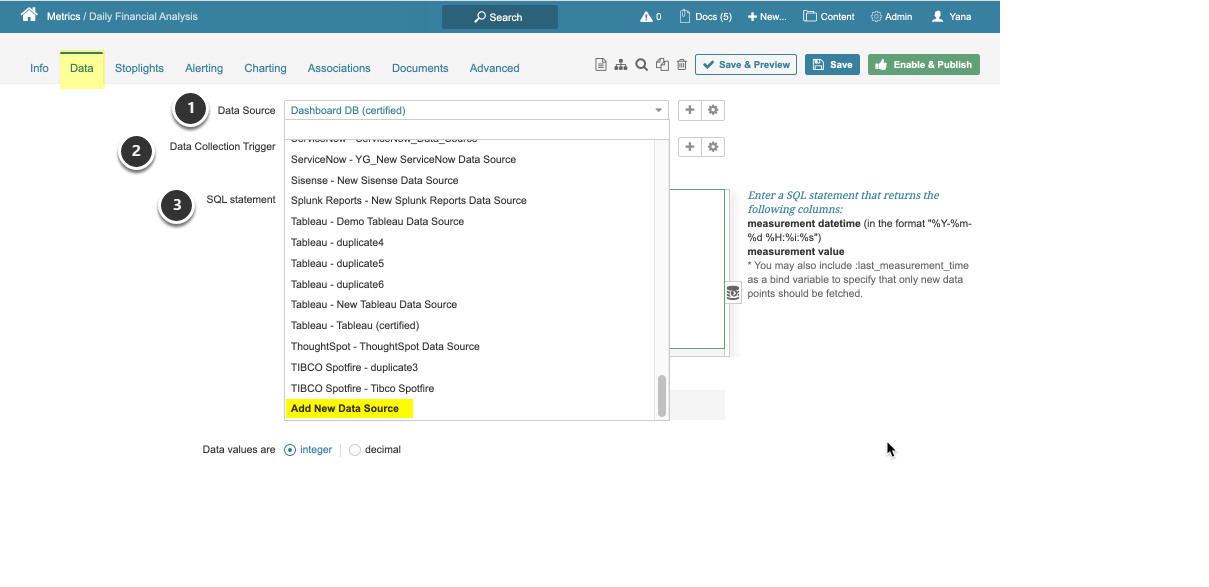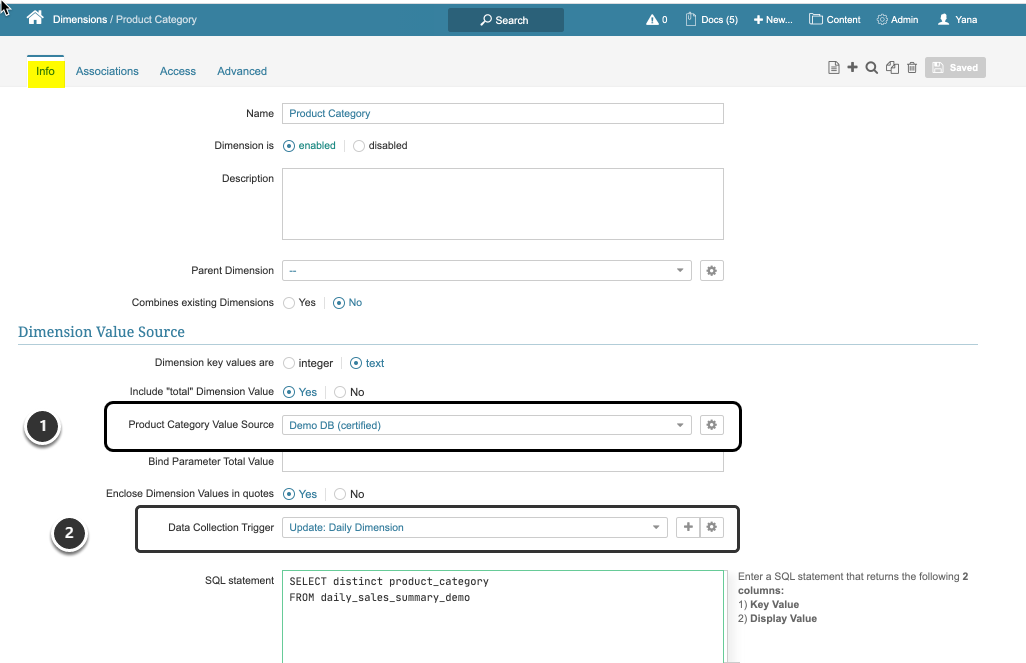There are two types of Data Sources in Metric Insights:
- Configurable: are Data Sources for which the source database and access credentials are user-defined. Each Metric Insights customer can establish and maintain SQL-based access to internal databases and Plugin connections to external sources, including Web Services and a wide range of data service providers.
- Non-Configurable: are received by all customers and require no customer maintenance or configuration.
1. Configurable Data Sources (You can use either of the following to pull data into Metric Insights):
- SQL: Any source accessible through a JDBC driver is considered a SQL data source. This includes traditional databases as well as NoSQL sources with JDBC access; for example, Hadoop Hive.
- Plugin: Are used to obtain data that is not fetched using a JDBC driver and is collected using a plugin. Plugins are special components, built by Metric Insights, that send a native fetch command to a Data Source. Results are fetched in a way that allows Metric Insights to consume the data.
NOTE: Web Services are considered to be a Plugin configured to access data from a custom Web Service
2. Non-Configurable Data Sources available to all customers are:
- Datasets: Datasets function as an additional layer between Data Sources and elements created in Metric Insights.
- Manual/CSV Data: Key enter individual data points or upload data from a CSV file
- External Process: Push data to Metric Insights (does not require a credential set, but can authenticate if required); a Data Posting URL is provided.
- Existing Datasets - SQL (introduced in Version 5.0.5 for fetching Reports and Version 5.1 - for Metrics): You can fetch data from any Dataset created in the system to source a new Report or Metric.
- Existing Reports - SQL: Use data in one or more Reports to populate a new Report.
- Single Existing Report: A method similar to "Existing Reports - SQL" described above, but does not require writing a fetch command - the process is more automated.
- Existing Metrics: Obtain data in one or more Metrics to populate a new Metric or Report.
- Aggregate a Metric: Build a new Metric by using various aggregation options.
3. Remote Data Processor
- If a Data Source requires a Remote Data Processor, see Configuring a Remote Data Processor (v6+) for more information.
For Data Source Security, see Granting Power User Access to Data Source.
1. Data Source Editors
Information on creating new Data Sources can be found at:
2. Select a Data Source: Element or Dataset/User Map Editor > Data tab
- The Data Source drop-down list contains all of the SQL and Plug in Data Sources that have been defined for your instance as well as all non-configurable Data Sources
- There is also an option to Create a New Data Source
- Select a Data Collection Trigger that fetches the data. Those are used to control when content should be updated.
- Based on your Data Source selection, you either see a Plugin Command / SQL Statement text box into which you enter the fetch command or other options for defining what data should be fetched from the respective source.
3. Select Data Source for Dimension, Data Dependency, and Event Editors
The Event, Dimension and Data Dependency Editors all have data collection settings similar to those on the element editors.
The example above shows the Dimension Editor > Info tab
-
Data Source: "Product Category Value Source" is in the format of the setting's label: "<dimension name> Value Source". It represents the source from which the Dimension's Dimension Values can be fetched
- Each object editor that has a Data Source may label it differently to correspond the the object; whenever you see "source", think "Data Source"
- Data Collection Trigger: Object that controls when the values are to be fetched.

